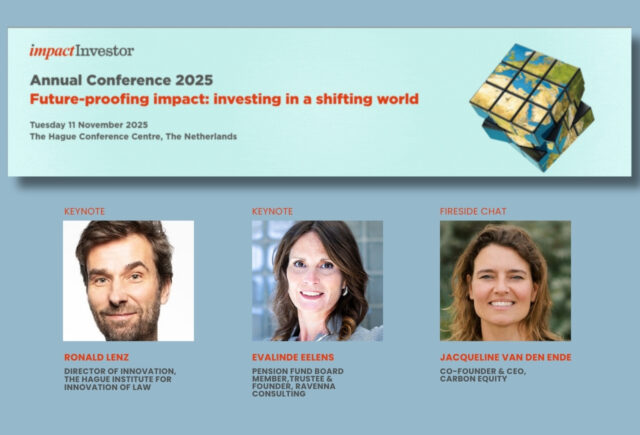Geoffroy Marcassoli, sustainability assurance leader at PwC Luxembourg, reflects on the debate over impact carried interest and why assurance should never be an afterthought in private equity.

Trust, but verify. It’s no longer just a saying – it’s becoming a structural feature of how capital is allocated for impact. According to the Global Impact Investing Network (GIIN), global impact investing assets under management reached $1.57trn (€1.35trn) in 2024, reflecting a 21% compound annual growth rate since 2019.

Institutional allocators, including pension funds, sovereigns, and insurers, are increasingly aligning mandates with themes such as climate resilience, social equity, and long-term value creation.
This redirection of capital is fuelling the rise of impact-linked strategies within private equity, especially in energy transition, inclusive infrastructure, and adaptation finance. As these funds scale, so does scrutiny. Investors want more than vision. They want verification – proof that outcomes are real, material, and durable. That’s where impact carried interest and independent assurance come into play.
How impact carried interest works
Traditionally, carried interest – typically 20% of a fund’s profits – rewards general partners (GPs) once financial thresholds are met. Impact carried interest introduces a second performance axis where a portion of the carried interest is conditional on achieving predefined, measurable impact targets, such as avoided carbon emissions, restored ecosystems or jobs created in underserved regions.
Most structures use a dual-trigger mechanism. A common model ties 80% of carried interest to financial performance, with the remaining 20% linked to impact KPIs. In more progressive funds, the impact-linked portion can reach 40%. By linking incentive to outcome, impact carried interest helps embed sustainability into strategy and not just into pitch decks.
Assurance turns structure into substance
As more funds adopt impact carried interest, independent assurance is becoming a defining feature of credible fund architecture. It validates whether impact targets have been met and ensures that the KPIs used are robust, relevant, and not self-monitored.
In today’s regulatory and fiduciary environment, assurance functions as a bridge between ambition and accountability. It gives limited partners (LPs) the confidence to treat impact-linked returns as real performance, not reputational gloss. For GPs, it operationalises credibility, supports fundraising, and reduces the risk of greenwashing claims down the line.
Many funds begin by applying assurance to their impact carry metrics and evolve toward full-fund assurance or verified reporting under frameworks like the Sustainable Finance Disclosure Regulation (SFDR) or emerging private market standards. Over time, this creates a traceable, defensible path from intent to outcome.
Why it pays to assure
Firstly, assurance gives investors the confidence needed that their investments have a sustainability-focused dimension beyond financial returns. Verification builds trust with institutional allocators, especially those under pressure to demonstrate impact to their own stakeholders, such as pension funds or state-related entities such as sovereign wealth funds.
Moreover, assurance is a core element of risk management as it can shed the light on blind spots, such as weak indicators or poor data integrity, before they become reputational or financial liabilities. In addition, as standards mature, early adopters of credible assurance frameworks will be better positioned in capital raising and regulatory readiness, giving them a distinct competitive advantage.
What comes next
Impact carried interest reflects a deeper shift in how value is defined and delivered in private markets, and particularly in private equity. But structure alone doesn’t guarantee integrity. Without verification, incentives risk becoming symbolic. With it, they become enforceable.
Asset managers that invest early in credible, assured impact frameworks won’t just meet rising expectations – they’ll shape them.
Geoffroy Marcassoli is sustainability assurance leader at PwC Luxembourg.





